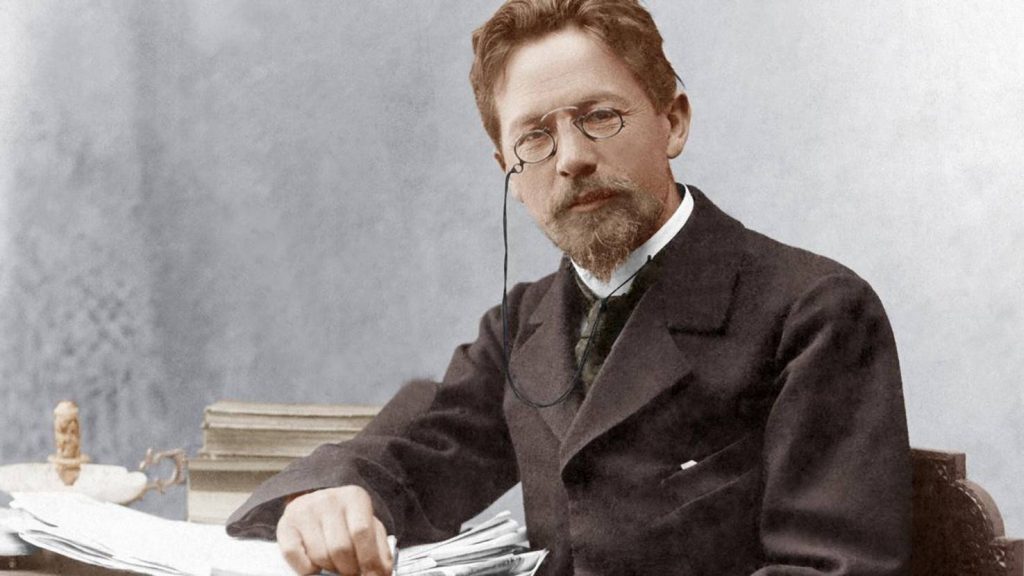By Anton Chekhov
Translated by Richard Pevear and Larissa Volokhonsky
Penguin Classics. 508 pp. £25.00
Reviewed by William Boyd

GETTY IMAGES
In 1923, the English novelist William Gerhardie – then very much the young literary lion of the day – published a short monograph entitled Anton Chehov (Gerhardie’s spelling). It was a fascinating introduction to Chekhov’s work, all the more interesting because Gerhardie had been born in Russia, spoke fluent Russian and had read Chekhov’s stories in their original language. Consequently, he was particularly well placed to introduce Chekhov’s art and mind to the growing English audience for Chekhov’s short stories. Chekhov had died in 1904, only nineteen years previously, yet most of his work was available in Constance Garnett’s translations and his plays were also being performed. In fact the first production of a Chekhov play, The Seagull, took place in Glasgow in 1909. Chekhov’s work – and, more intriguingly, his sensibility — was absorbed by British readers and audiences with remarkable speed. Chekhov’s influence on twentieth century English literature was both rapid and considerable. There was something about the Chekhovian world-view that was very appealing to British readers and writers.
Gerhardie puts it this way: “There is his always active faculty of observation, there is his passion for dispassion… If Chekhov had no axe to grind, he ground it, none the less so, to a razor blade of perpetual discrimination.” But, of course, his stories could only resonate to their new monoglot audience because they were in translation. Constance Garnett’s early 20th century translations set a high standard, rarely bettered, despite innumerable translations that have followed. She was a near contemporary of Chekhov, after all, and the cadences of her Edwardian English seemed to fit Chekhov’s own style of Russian remarkably well. As a kind of thought experiment, if you, as a non-Russian reader, want to gain some sense of what Chekhov sounds like to a Russian reader, then Constance Garnett does the job extremely well.
And, I suppose, you cannot have too much of a good thing. Any new translation of Chekhov that brings new readers to this literary genius (and I use that word very rarely) is to be welcomed and applauded. 52 Stories, in this translation by Richard Pevear and Larissa Volokhonsky (a husband and wife team), presents itself as offering a rich gamut of Chekhov’s stories throughout his short and intense writing career.
There is one problem with this generosity, however. Most of the stories Chekhov wrote up until 1888 (sixteen years before he died) are, at best, variably interesting, and, at worst, mirthless squibs that he churned out to earn money. In 1888 Chekhov published his first masterwork, “The Steppe”, the first story that he wrote for himself and not with some editorial commission or agenda in mind. The concensus amongst Chekhov scholars is that the period from 1888 until 1904, when Chekhov died, contains the vast majority of his brilliant, mature stories. By this token only the last fifteen out of these fifty-two stories fall into this category. This means that if you’re looking for an introduction to Chekhov’s stories that reflect his particular genius then this is not the best choice.
And then there is the matter of translation. Translators are trapped in a tricky, inescapable double-bind: they have to be both accomplished linguists and good writers. For all readers who are not fluent in Russian, the linguistic capabilities have to be taken on trust, but, as for the “good writer” aspect, you can rely on your ear. And it has to be said that Pevear and Volokhonsky’s English often sounds odd and curiously dissonant. One of the masterworks in this collection is the story “Ionych” – one I know well having adapted it as a TV movie. “Ionych” contains multitudes. The material of a whole novel is subsumed in its twenty or so pages. And it’s very funny, satirising small-town, provincial Russian life in all its absurdities and pretensions. I adapted my film from the Constance Garnett translation (revised by Donald Rayfield). One example will have to suffice as an instance of what I mean by Pevear and Volokhonsy’s idiosyncratic English. This is Pevear and Volokhonsky:
“Startsev was introduced to Ekaterina Ivanovna, an eighteen- year old girl, who resembled her mother very much, was just as thin and nice-looking. Her expression was still childlike and her waist slender, delicate; and her maidenly, already developed breast, beautiful and healthy, spoke of springtime, real springtime” (P & V)
And this is Garnett/Rayfield:
“Startsev was introduced to Ekaterina Turkin, a girl of eighteen, very much like her mother, thin and pretty. Her expression was still childish and her waist was soft and slim, and her strong virginal breasts, healthy and beautiful, spoke of spring, real spring.”
The description of Ekaterina is essentially similar – you gain a clear impression of her. But the Pevear and Volokhonsky version reads like a dogged, clumsy, almost literal translation where the translator as linguist triumphs; while the other (Garnett/Rayfield) reads like fluent, limpid English – well-written. Time and again, page after page, in the Pevear and Volokhonsky translations of these stories one comes up against this strange translatorese, for want of a better word. It draws unwelcome attention to the skewed version of English deployed and chosen – it gets in the way of Anton Chekhov.
The poet and critic, Craig Raine, in an essay he wrote about translation and what is lost and gained in the process, stated that, “The translator must be good at the language he is translating from, but perfect in the language he is translating into.“ Raine adds the wonderful metaphor that, in good translation, “The spirit of each language is different. Cognac, as it were, somehow becomes whisky. And occasionally cognac becomes a ginger beer shandy or a lager and lime.” Unfortunately, 52 Stories turns Chekhov’s miraculous cognac into lager and lime.
